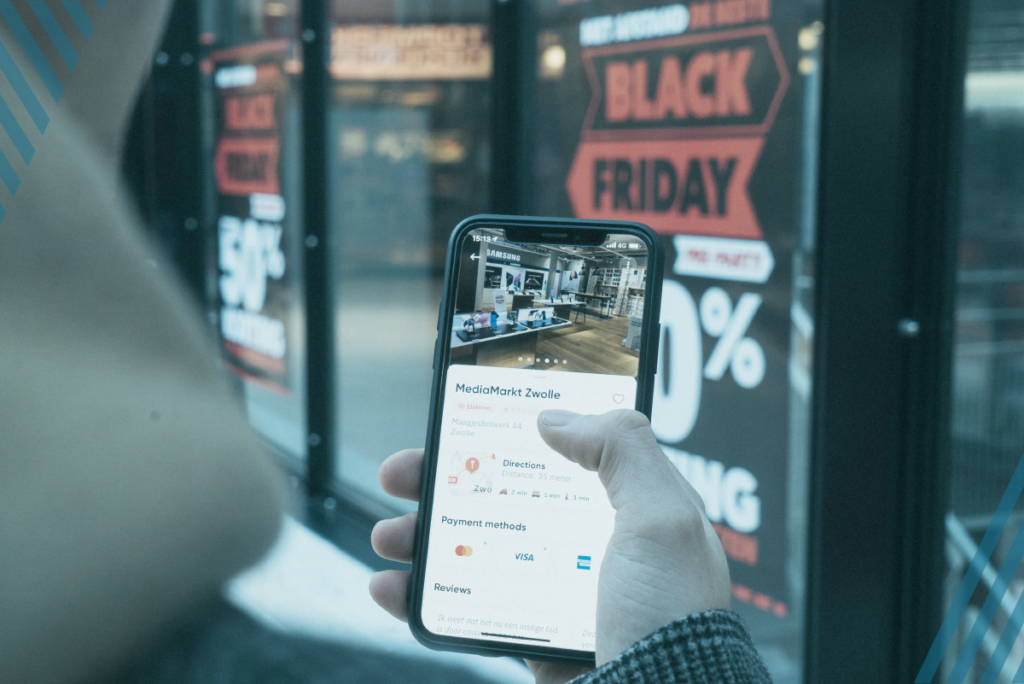Learn how BI can become a key tool in your Black Friday strategy, ensuring higher profits and fewer complications in your sales.
The world has changed since the Covid-19 pandemic started, and that includes Black Friday and how it all works. Due to social distancing policies, the digital transformation boom and the rise of e-commerce have made the celebrated shopping day more technological than ever. This has made e-commerce grow 75% during the period, according to research from Mastercard.
However, growing vaccination rates and looser social distancing rules mean retail is once again gearing up for next year’s Black Friday. There is plenty of uncertainty around it, but the return to brick-and-mortar stores is on the horizon—only this time, based on an omnichannel strategy, combining physical and digital brand efforts.
How about you? Are you ready to boost your sales? Business Intelligence can be a powerful ally, ready to help you organize and execute your strategy, make decisions based on reliable data, and increase your profits significantly.
Black Friday and BI: What are the main problems faced by retailers and consumers during Black Friday?
Holidays have their own special issues—especially when we’re dealing with a major event, with high expectations among both buyers and sellers. Before you start worrying about removing the obstacles on your path, however, you need to understand exactly what they might be.
The main problems faced by retailers are:
1) Poorly organized inventory
Have you ever considered how often items are out of stock during Black Friday? Unfortunately, this is all too common, and it can compromise the bottom line for the entire quarter. On the other hand, going overboard with inventory is not any good either—items sitting on shelves equal wasted capital and difficulty cutting costs.
2) Trouble coming up with strategic planning
Developing an efficient strategic plan and making sure it includes all your goals can be really hard, particularly when it comes to a high-profile event like Black Friday. However, planning is absolutely required to ensure excellent performance and stellar results.
3) Obstacles to implementing an omnichannel strategy
Omnichannel strategies are in right now, but that doesn’t mean you simply need a physical store, an e-commerce website, and an app. More than the number of sales channels, what really matters for an omnichannel strategy is aligning every channel in terms of strategy and communications.
In other words, the way you convey your brand, the sales you hold, and the products you sell have to be present or connected in every point of sale. Have you ever imagined what it would be like if the reps at your brick-and-mortar stores had access to customer behavior data from your e-commerce enterprise? They could provide customized service, close more sales, and increase average tickets. However, this is impossible without solid data analysis.
The main problems faced by customers, on the other hand, are:
1) Wanting a product that’s out of stock
Yes, this mirrors the inventory management problems faced by retailers (we told you it was important!). Believe me: nothing disappoints customers on Black Friday as much as finding out their dream product or service is out of stock. It’s a veritable cold shower, and incredibly destructive for customer experience.
2) Sales that aren’t really sales
Everyone knows Black Friday is the most highly anticipated shopping day of the year, full of sales and price markdowns. And that’s exactly what customers expect to find. So don’t try to play it safe and only offer low discounts. Five or ten percent isn’t enough. Sales that barely shift prices are a major source of frustration for customers. And remember, you might not have blockbuster sales, but your competitors will.
3) Supply chain issues
Shipping delays, wrong delivery addresses, wrong items, and supply chain issues are frequent customer complaints during Black Friday. Higher order volumes make brands more error-prone, but that’s no excuse for disappointing your customer.
Whether or not you outsource your shipping process, it’s your company’s name on the line. That’s why you need reliable data collection to keep track of deadlines, addresses, and orders.
Business Intelligence on Black Friday: How can it help?
Now that you’ve learned about the main issues faced by both sides of a Black Friday sale, it’s time to learn how to solve them. And yes, Business Intelligence and data analysis are key elements of the solution.
Next, you’ll see how they can help your company overcome the challenges above, and plenty of others, too.
1. BI, your inventory’s best friend
You already know too much inventory is bad, and so is too little. For Black Friday, you need to find the inventory sweet spot, ready to meet your customers’ demand without compromising your storage space and credit capacity.
But how? With studies based on purchasing data and consumer behavior, knowledge about processes and flows, and by improving merchandise handling and organization processes—and Business Intelligence can help you every step of the way.
2. Planning and executing the strategy
With data analysis, you put decision-making in your company on sounder footing, using a series of highly accurate metrics and studies to organize the strategic planning process.
This makes it easier to develop a systemic view of the organization and its context and understand defaults, cash flow, and the need for changes and improvements. This information is a precondition for learning from your mistakes, investing on your strengths, and coming up with effective solutions for your strategic plan.
3. Investing in an omnichannel strategy
It should be clear by now that having every sales channel in line with your strategy absolutely requires data intelligence. And notice that second word there, “intelligence,” next to “data.” Collecting relevant data isn’t enough. You need to understand it and analyze it in order to develop an omnichannel strategy.
And if we’re talking data intelligence, that means we’re talking Business Intelligence. With BI, you don’t need to puzzle out which piece of data connects to which other piece of data to get the analysis to work. It’s all there already, clustered and customized to meet your needs.
4. Controlling your logistics system
Given how complex the industry can be it, it’s not unusual for bottlenecks to hinder both productivity and competitiveness, increasing costs and requiring rework. And if there’s one thing we don’t want on Black Friday, it’s wasting time (and money) that could have been invested in marketing and sales.
And here’s where Business Intelligence comes in. As a methodology focused on minimizing error and aiding decision-making, BI can help managers by collecting relevant data and providing access to dashboards with real-time information to enable process monitoring at every level.
5. Improving your marketing performance
BI can also help you build a profile of a given company’s customer, enabling you to provide the marketing department with information to develop more efficient campaigns for Black Friday.
This requires analyzing the information sourced from customer data and learning who is actually buying and consuming your goods and services. This will allow you to develop a customized approach for each customer and invest in improving their shopping experience—whether on your website, app, or physical store.
6. Finding out what products consumers favor
Do you know which of your products and services your customers really, really love? BI can also help you understand your sales champions year after year on Black Friday, as well as the profit margins for each product.
This gives you a better handle on which sales are up, and which are down, and provides critical information to help you plan next year’s Black Friday.
7. Tracking targets efficiently
Business Intelligence is also a key ally for tracking and achieving Black Friday targets. After all, it can display and compare past and present data and even generate projections based on existing information.
Retail data analysis can also help you achieve new targets, but that requires managers to understand current team performance, pinpoint gaps between sales and preset targets, and identify whether sales are following projected trendlines or not.
Practical examples of BI use in Black Friday campaigns
Panvel
Focused on a multichannel strategy, Panvel, a drugstore chain working in Southern Brazil, managed to increase conversion rates by 85 percent. The brand decided to integrate its website and brick-and-mortar strategies based on customer behavior data.
Customers at Panvel’s brick-and-mortar stores got a leaflet in their shopping bags, including a reminder to register their data and a QR code. By scanning the QR code with their smartphones, customers were redirected to a landing page featuring a prize wheel. For users arriving via the website, the prize wheel was loaded automatically.
Wine
The online wine retailer used data analysis to develop a CRM strategy, focused on customer retention and improved relationships. Customer data is used to offer users the specific products they are more likely to purchase, given their previous orders.
In addition, Wine also implemented a customized e-mail marketing strategy which helped boost website traffic by 40 percent.
Azul Linhas Aéreas
Thanks to data analysis, airline Azul was able to develop automated, customized actions for each customer, focused on strengthening relationships and enhancing retention. This enabled the company to triple conversion rates compared to before implementing the strategy.
How about implementing BI right now and killing it the next time Black Friday comes around?
BlueMetrics is partners with Sisense, one of the world’s leading Data Analytics and Business Intelligence. It can help you implement the best data analysis solution to boost management and decision-making in your business.
Fill out our form and we’ll get back to you.



